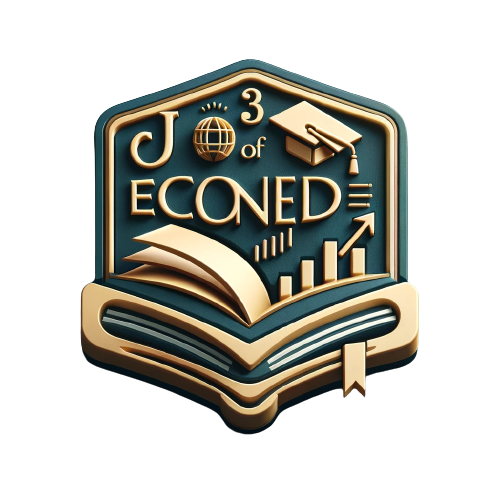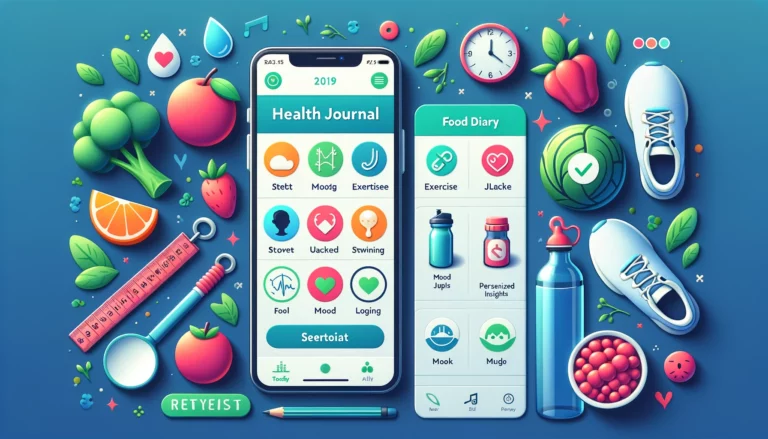Economics teaching methods
Experiential Learning
Experiential learning plunges students into the vibrant, often chaotic world of economic concepts—where theory meets reality in a dance of understanding. Picture this: learners diving headfirst into activities that replicate real-life economic scenarios, where each twist and turn offers hands-on experiences that elevate comprehension to dizzying heights. These dynamic engagements might unfold as case studies bursting with rich data, field research brimming with fresh insights, or interactive projects that spark critical thought like fireworks in the night sky.
Such immersive involvement does more than just connect dots; it catapults students from mere observers to active participants who bridge the chasm between abstract theories and tangible practices. The result? A deeper, more nuanced appreciation for economics emerges—a transformation fueled by curiosity and exploration.
But wait—there’s more! When educators weave experiential learning techniques into their teaching fabric, they’re not just embellishing lessons; they’re crafting vital skills imperative for navigating the intricate maze of economics. Students find themselves dissecting complex situations with laser-like focus, balancing competing variables like seasoned jugglers while concocting solutions grounded in solid empirical evidence. This approach doesn’t merely enrich educational journeys—it equips aspiring economists to make informed decisions and adapt fluidly within ever-shifting landscapes.
Through these exhilarating methods, teachers ignite a fervor for economics that transcends classroom walls—sparking lifelong passions destined to thrive beyond academic confines.
The Role of Simulations and Role-Playing
Simulations and role-playing—oh, what a fascinating duo in the realm of economics education! They aren’t just tools; they’re gateways to rich, immersive experiences that echo the cacophony of real-world scenarios. Picture this: students plunging into simulated markets or donning the hats of various economic agents. It’s here that those knotty concepts like supply and demand, market equilibrium, and competition come alive in vibrant hues. This isn’t merely theoretical musings on paper; it’s a tactile adventure where learners can wield their knowledge, digging deep into the very essence of economic principles.
As they navigate through these swirling dynamic situations, something magical happens—they cultivate critical thinking and hone problem-solving skills essential for dissecting complex economic conundrums. The interactive pulse of these methods breathes life into passive learning; no longer are students just sitting back as silent recipients of information but rather transforming into spirited participants in an intellectual dance.
They’re not just applying dusty textbook theories; they’re experiencing firsthand how individual decisions ripple through expansive economic waters. And let’s not overlook the collaborative magic at play! Role-playing fosters communication and negotiation prowess as learners articulate their viewpoints while deftly responding to others’ strategies—a delightful interplay that enriches both understanding and enjoyment.
In this whirlpool of interaction, learning morphs from mundane routine to exhilarating exploration, equipping students with crucial tools for navigating the unpredictable terrain they’ll encounter in their careers ahead. What a thrilling journey it is!
Flipped Classroom Model
The flipped classroom model turns the conventional learning setup on its head, flipping the usual flow of educational activities like a pancake in a skillet. In this dynamic approach, students dive into instructional content outside the boundaries of class—think videos, readings, or other engaging resources—granting them the freedom to soak up material at their own rhythm. When they finally gather in class? That time transforms into a vibrant hub for interactive endeavors that dig deeper into understanding: spirited discussions, hands-on projects that spark creativity, and collective problem-solving sessions abound! This shift not only ignites active participation but also cultivates an enticing atmosphere ripe for learning.
Now let’s consider what implementing this flipped classroom model brings to both students and educators—a treasure trove of benefits! For starters, it paves the way for differentiated learning; students can revisit content as often as needed, tailoring their experience to various styles and paces. On top of that, teachers morph into guides rather than mere lecturers—they focus on steering conversations and providing personalized support right there during class time. The result? An enhanced interaction landscape where collaboration flourishes—students learn from each other while seamlessly weaving theoretical knowledge into practical application scenarios. It’s education reimagined!
Benefits of Assigning Learning Activities Outside the Classroom
Diving into learning activities beyond the classroom walls catapults students into the vibrant world of economic concepts swirling around them. This dynamic approach doesn’t just scratch the surface; it dives deep, allowing learners to weave theoretical knowledge seamlessly into the fabric of real-life situations, igniting critical thinking and honing analytical prowess. As they engage with their surroundings and tap into local resources, students can unearth connections between abstract economic theories and the tangible realities of daily life.
Moreover, these outside-the-box activities empower students to seize control over their own educational journey. With this newfound autonomy comes a spark of motivation—a flicker that lights up accountability—enabling them to delve into subjects at a rhythm that suits their individual pace. When faced with hurdles in these unconventional environments, students cultivate resilience and sharpen problem-solving skills—qualities that are not just beneficial but essential for thriving in the intricate realm of economics.
| Activity Type | Description | Skills Developed |
|---|---|---|
| Field Trips | Visits to local businesses or markets to observe economic transactions and market dynamics. | Critical Thinking, Analytical Skills |
| Community Projects | Engaging in projects that address local economic issues, such as unemployment or resource management. | Problem-Solving, Teamwork |
| Interviews | Conducting interviews with local entrepreneurs and business owners to gain insights into real-world economic decisions. | Communication, Research Skills |
| Workshops | Participating in hands-on workshops focused on budgeting, investing, or entrepreneurship. | Financial Literacy, Practical Application |
| Simulations | Engaging in economic simulations that mimic market dynamics or business operations. | Strategic Thinking, Decision-Making |
Collaborative Learning Techniques
Collaborative learning techniques—oh, how they weave a tapestry of interaction among students! They beckon learners to dive headfirst into the ocean of economic concepts, where understanding runs deeper than a mere surface glance. In these bustling groups, perspectives clash and intertwine like threads in a complex fabric, challenging each participant’s solitary viewpoint. It’s here that critical thinking springs to life; minds sharpen as individuals engage in spirited debates over the kaleidoscopic array of economic issues.
The very essence of collaboration breathes new life into communication skills. Students find themselves articulating thoughts with clarity and persuasion, honing their ability to convey ideas effectively—a vital asset in today’s fast-paced world. The synergy of group dynamics mirrors the unpredictable nature of real-world economics, where teamwork is not just beneficial but essential for triumph.
Picture assignments demanding joint problem-solving: tasks morphing into collective endeavors where responsibilities shift according to each member’s unique strengths. Efficiency blossoms from this division of labor while fostering an environment rich in accountability; after all, every contribution weighs heavily on the group’s success or failure. This intricate structure nurtures a profound sense of responsibility among peers—a compelling reminder that cooperation isn’t merely advantageous but fundamental for reaching shared ambitions!
Building Teamwork Skills in Economics
Integrating collaborative learning techniques into the realm of economics education creates a fertile ground for teamwork skills—those essential tools for maneuvering through the intricate labyrinth of real-world economic dilemmas. Picture this: group projects and vibrant discussions, where students come together to exchange a mosaic of diverse perspectives, sparking richer analyses and innovative problem-solving strategies that might otherwise remain dormant in isolation. In the throes of engaging activities that demand negotiation and consensus-building, students not only learn to appreciate varied viewpoints but also hone vital interpersonal skills—a dance of dialogue that mirrors the bustling professional arenas where collaboration reigns supreme.
But wait—there’s more! The essence of teamwork within economics education doesn’t just foster camaraderie; it ignites accountability among students like a flame kindling resolve. When individuals find themselves enmeshed in a group dynamic, an innate motivation often surfaces—the drive to put forth their utmost effort because they know their peers are counting on them. This interplay cultivates not just responsibility but an unwavering commitment to shared objectives. Indeed, evaluating group performance can unveil layers of individual contributions while simultaneously underscoring how crucial collaboration is in reaching those collective milestones we strive for together.
Self-Directed Learning
Self-directed learning tosses the reins of education into the hands of students, allowing them to steer their own ships through the vast seas of knowledge. This dynamic approach nudges individuals to carve out personal goals, hunt for resources like treasure maps, and critically appraise their journey’s progress. By crafting an atmosphere where learners can dive into topics that spark their curiosity—especially in economics—educators ignite a flame of intrinsic motivation alongside sharp critical thinking skills. Students learn to wrestle with challenges on their own terms, honing problem-solving abilities that become vital tools in navigating the complexities of real life.
When autonomy takes center stage in the classroom, students often experience transformative benefits that ripple through every aspect of their education. Bestowing them with the freedom to chart their own learning courses typically results in a surge of engagement and retention; it’s as if they’ve discovered hidden depths within themselves! This newfound independence not only amplifies knowledge absorption but also instills a sense of responsibility for what they learn and how they grow. As these young scholars reflect on their strengths and weaknesses, they sharpen self-monitoring skills—a crucial asset for both academic pursuits and future professional endeavors.
Encouraging Student Autonomy and Responsibility
Nurturing student autonomy in economics education sparks a vibrant sense of ownership over one’s learning journey. When students actively embrace responsibility for their educational paths, an exhilarating engagement and motivation often follow. Educators can weave this tapestry by presenting avenues for self-directed projects—open doors that invite students to delve into topics that ignite their curiosity within the expansive landscape of the curriculum. These explorations not only stimulate critical thinking but also enrich understanding of economic principles through personal inquiry.
Yet, fostering responsibility extends beyond mere exploration; it requires clear expectations around how student work will be assessed. By laying out transparent criteria, educators illuminate the path ahead, allowing learners to grasp precisely how their efforts will be judged. Regular check-ins and reflective opportunities further bolster this burgeoning sense of accountability—like anchors amidst a sea of information! This multifaceted approach not only aids students in deepening their comprehension of economic concepts but also cultivates vital skills that resonate across both academic realms and professional landscapes alike.
Assessment and Feedback Methods
In the vibrant realm of the economics classroom, effective assessment and feedback methods emerge as pivotal players, orchestrating a delicate dance between teaching strategies and student learning. Picture formative assessments—quizzes that tease out knowledge, short assignments that challenge understanding, and lively group discussions that spark debate—each offering a treasure trove of insights into how well students grasp those intricate economic concepts. These tools are not just mundane checkboxes; they illuminate pathways where students stumble, allowing instructors to swoop in with timely interventions before confusion takes root.
Now, let’s pivot to summative assessments—the grand stage where exams and substantial projects come together for a more sweeping evaluation of student progress and comprehension. But wait! There’s more! By weaving in peer assessments and self-evaluations into this tapestry, educators can ignite a profound sense of accountability within their students. It becomes an invitation for them to pause and reflect on their performance—a moment of introspection amidst the whirlwind of academic life. And what follows? Individualized feedback emerges like a beacon after these evaluations, nurturing a growth mindset that inspires students to dive deeper into the material while honing critical thinking skills vital for their future escapades in economics.
Evaluating Student Understanding and Progress
Effective assessment methods are absolutely vital for accurately measuring student comprehension in the realm of economics. But wait—traditional testing? Sure, it has its place, yet there’s a whole universe of alternative approaches waiting to be explored! Picture this: formative assessments that morph and adapt, peer evaluations buzzing with collaborative energy, and project-based assignments that breathe life into theoretical concepts. These diverse strategies not only unveil students’ understanding but also illuminate their prowess in translating theory into practice amidst the complexities of real-world scenarios. By weaving together these varied evaluation forms, educators can cultivate a richer tapestry of student capabilities.
And let’s not forget about feedback—it looms large in the assessment landscape! Timely and constructive feedback is like a guiding light for students as they navigate their learning paths. Individualized comments on assignments spark recognition of strengths while shining a spotlight on areas ripe for growth. Group discussions dissecting common misconceptions ignite deeper engagement with the material at hand. This dynamic interplay fosters an environment where continuous learning flourishes, empowering students to seize ownership over their educational odyssey!
- Engage students with formative assessments that provide real-time insights into their understanding.
- Incorporate peer evaluations to encourage collaboration and critical thinking among classmates.
- Utilize project-based assignments that allow students to apply theoretical knowledge to real-world problems.
- Provide timely and constructive feedback to guide students in recognizing their strengths and areas for improvement.
- Facilitate group discussions to address common misconceptions and deepen engagement with the material.
- Create a variety of assessment methods to cater to different learning styles and preferences.
- Foster a culture of continuous learning where students feel empowered to take ownership of their educational journey.
Conclusion
The amalgamation of varied teaching methodologies in economics catapults student engagement and comprehension to new heights. Picture this: experiential learning, flipped classrooms, collaborative projects, and self-directed study swirling together to create a vibrant educational tapestry. Imagine educators wielding simulations and role-playing like master artists, crafting real-world scenarios that ignite critical thinking and the application of economic theories. These techniques don’t just stop at individual enlightenment; they spark collaboration among students, weaving stronger teamwork skills into their academic fabric while unraveling the intricacies of complex concepts.
But wait—there’s more! Enter assessment and feedback strategies, crucial players on this stage called education. Timely and constructive evaluations are not mere checkmarks; they’re invitations for learners to dive deep into introspection about their performance, illuminating paths for improvement. Ultimately, embracing this multifaceted approach to teaching economics doesn’t merely arm students with essential knowledge—it readies them for the unpredictable terrain of real-world challenges while nurturing a profound appreciation for the subject itself.







